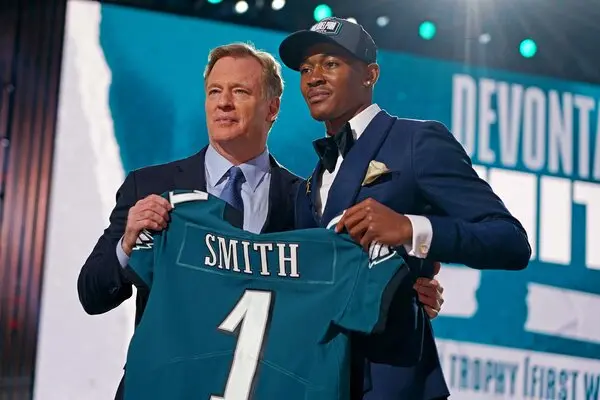Draft day gut instincts vs. data—who wins out?

Every spring, NFL executives stare down a familiar crossroads. Do they trust the sharp instincts of scouts with decades in the trenches, or should they bet big on the flood of analytics that promise to predict a prospect’s career before he even puts on a pro jersey?
This tension is reshaping front offices across the league. Some swear by gut feelings, pointing to surprise stars who baffled the spreadsheets. Others lean into data, seeking an edge in a game where every decision echoes for years.
Let’s break down how teams blend art and science in their hunt for draft day gold—and what it means for the next generation of NFL talent.
The evolving draft room: where instinct meets analytics
Walk into an NFL draft room today and you’ll notice a dramatic shift from just ten years ago. Clipboards and gut calls are still there, but they now sit alongside giant screens, real-time data feeds, and teams of analysts crunching advanced stats late into the night.
Front offices have realized that relying on either pure instinct or only the numbers leaves too much to chance. Veteran scouts bring decades of player evaluation experience—spotting quirks or mental toughness that never show up in spreadsheets. Meanwhile, data-driven models flag breakout college players who don’t fit the traditional mold but statistically signal high NFL upside.
This push-pull isn’t just theory. Some teams split their rooms: analytics staff advocate for high-value picks based on predictive metrics, while coaches lobby for prospects with that intangible “it” factor. Others merge both worlds, making decisions only when numbers and eyes align—or at least find a workable compromise.
The surge in analytics has changed the entire draft landscape. Moneyball strategies migrated from baseball to football, encouraging teams to hunt for overlooked value rather than chase hype alone.
It’s not only football feeling this shift. In sports betting, platforms like Zaklady Guru are giving fans access to sophisticated data tools once reserved for pros—proving how numbers are reshaping decision-making well beyond the gridiron.
The best franchises recognize that innovation isn’t about replacing one approach with another; it’s about making them work together when the clock is ticking and every pick counts.
The science behind draft analytics
Analytics have moved to the center of NFL draft strategy in just a few short years. It’s not just about 40-yard dash times or bench press reps anymore.
Teams are now diving into layers of data, using everything from GPS tracking to college production models to spot potential stars and avoid costly busts.
What’s changed most is the focus on predicting future success rather than rewarding past performance. Decision-makers want models that cut through the noise, flagging players whose numbers point toward long-term value—sometimes in ways traditional scouting misses completely.
These tools aren’t perfect, but they’ve forced every franchise to rethink how they weigh risk and upside. In my experience talking with analysts around the league, it’s clear: ignoring analytics is no longer an option if you want a real edge on draft day.
Beyond the combine: predictive metrics and player value
Modern front offices lean on advanced stats that reach far beyond what we see at the combine. Take breakout age, for example—the age when a prospect first dominates at the college level. Earlier breakout often hints at higher ceilings in the NFL.
Athletic score composites blend multiple physical tests into one number, allowing teams to quickly compare prospects across positions and years. Add in production models that weigh college stats against historical outcomes, and you get a sharper forecast for who might actually thrive on Sundays.
The best organizations use these numbers as filters—not as gospel—to help identify hidden gems and challenge old assumptions about what makes a player truly special.
Limitations of numbers: what analytics can’t capture
No matter how sophisticated your model is, some qualities just don’t fit in a spreadsheet. Leadership, resilience under fire, and locker room presence are classic examples—intangibles that still make scouts pound the table for “their guy.”
I’ve seen teams run all the data they want, only to return to in-person interviews and psychological profiles when things get close. Some front offices even send staff out for surprise campus visits or talk with coaches off-the-record just to get a feel for who’s really driving a team’s culture.
This human layer keeps analytics honest—and reminds everyone why there’s still plenty of art left in drafting tomorrow’s stars.
The enduring power of gut instincts
Even as analytics reshape how teams scout talent, gut instinct refuses to fade into the background on draft day.
Ask any veteran scout or coach and you’ll hear that a hunch, shaped by years in the game, can tip the scales when data doesn’t offer a clear answer.
Sometimes, intuition flies in the face of numbers—resulting in either draft day legends or infamous busts. It’s this unpredictable human factor that keeps front offices debating just how much to trust their gut.
When intuition lines up with data, teams feel confident. But when it clashes, tension in the draft room is inevitable. Gut calls still shape careers and franchises—sometimes for better, sometimes for worse.
Scouting stories: When instinct beat the odds
The NFL is filled with stories where a bold hunch changed history. Think about Tom Brady—picked 199th because his combine results were unimpressive and his stats weren’t eye-popping. A Patriots scout had a feeling about his leadership and toughness that numbers just couldn’t explain.
On the flip side, there are famous missteps: teams falling in love with a player’s attitude or physical presence despite warning signs on tape or off-field concerns. The Browns selecting Johnny Manziel based partly on “gut” over analytics stands out as a cautionary tale.
These moments show why teams still debate: do you trust what you see on film and feel in your bones—or stick to the spreadsheet?
The human element: Traits data can’t quantify
No algorithm can measure pure competitiveness or how a player lifts teammates during crunch time. Intangibles like resilience under pressure or relentless drive often reveal themselves only in personal interviews or game-day adversity.
I’ve seen prospects who look average on paper rise above expectations because they simply refuse to lose—something scouts sense but can’t prove with data alone. Teams value these “locker room leaders” even when their athletic metrics seem ordinary.
This is why most front offices still lean heavily on face-to-face assessments and character checks. When numbers leave doubt, it’s these elusive qualities that can make all the difference between a good pick and a great one.
Blending art and science: The modern scout’s approach
The best NFL scouting departments don’t pick sides—they combine instinct and analytics for every decision. Scouts arrive at draft meetings armed with both gut impressions from campus visits and detailed reports full of advanced metrics.
I’ve heard recent stories from front offices where disagreements spark healthy debate: data might suggest passing on an injury-prone prospect, while an area scout passionately vouches for his drive to succeed. The winning formula comes from weighing both sides—not letting either dominate blindly.
This hybrid model lets teams filter out emotional bias without missing those special intangibles that statistics overlook. The smartest organizations know there’s value in trusting experience while respecting what the numbers reveal about risk and reward.
Draft day pressure and split-second decision making
Every NFL draft room on selection night feels like a pressure cooker. The clock is relentless, millions are watching, and one choice can define a franchise for years.
In those tense moments, teams must juggle reams of scouting reports, last-minute medical updates, and swirling rumors about other teams’ moves.
Stress doesn’t just come from the outside. Inside the room, groupthink can take hold—especially when there’s disagreement between scouts who trust their gut and analysts who have data to back up their claims.
The smartest organizations have clear processes to keep emotions in check. Some rely on pre-made draft boards as anchors when nerves spike. Others empower a single voice—often the general manager or head coach—to break ties when opinions clash.
One thing is clear: whether it’s a data update or an unexpected hunch, information that surfaces in the final minutes can tip the scales dramatically and change a team’s strategy in an instant.
The psychology of the draft room
Sitting around that table as the clock ticks down, stress plays tricks on even seasoned professionals. There’s always tension between sticking to months of prep work and reacting to sudden changes—like another team trading up for a coveted player.
Confidence—or lack of it—ripples through the group. If leadership appears decisive, others tend to follow; if doubt creeps in, even solid plans can unravel fast.
Team dynamics play a bigger role than many fans realize. A trusted scout with years of wins may sway the room with a passionate pitch for his guy, while younger analysts can struggle to be heard when adrenaline is surging.
I’ve seen situations where strong personalities dominate conversation, drowning out quieter but insightful voices. The best teams put checks in place—like round-the-room voting or strict time limits—to make sure every perspective gets heard before decisions are locked in.
Case studies: data vs instinct in recent drafts
The 2024 NFL Draft offered classic examples of analytics clashing with gut instinct at critical moments.
One high-profile case involved a top quarterback prospect with elite athletic metrics but mixed tape against strong opponents. Several front offices leaned heavily on predictive models suggesting his upside was off the charts—yet an established GM opted instead for a safer pick based on his scouts’ concerns about leadership under pressure.
On the flip side, another team took flak for ignoring consensus mock drafts (and several proprietary models) by reaching for a receiver whose character interviews blew them away—even though his combine numbers were average at best. Early reviews suggest that gamble paid off during rookie minicamp chemistry sessions with their veteran QB.
No matter how much data teams bring into draft night, human factors still find ways to shape—and sometimes surprise—the outcome when it matters most.
Conclusion: Finding the winning formula
The most successful NFL teams aren’t picking a side in the debate between gut instincts and analytics—they’re building a bridge between both worlds.
Raw numbers tell a story, but they don’t capture everything that matters about a prospect’s fit or drive.
When front offices combine sharp scouting intuition with rigorous data, they make smarter bets and avoid costly blind spots.
This balanced approach isn’t just reshaping draft day—it’s helping teams stay ahead of rivals who still lean too far one way or the other.

NFL Draft Diamonds was created to assist the underdogs playing the sport. We call them diamonds in the rough. My name is Damond Talbot, I have worked extremely hard to help hundreds of small school players over the past several years, and will continue my mission. We have several contributors on this site, and if they contribute their name and contact will be in the piece above. You can email me at nfldraftdiamonds@gmail.com
